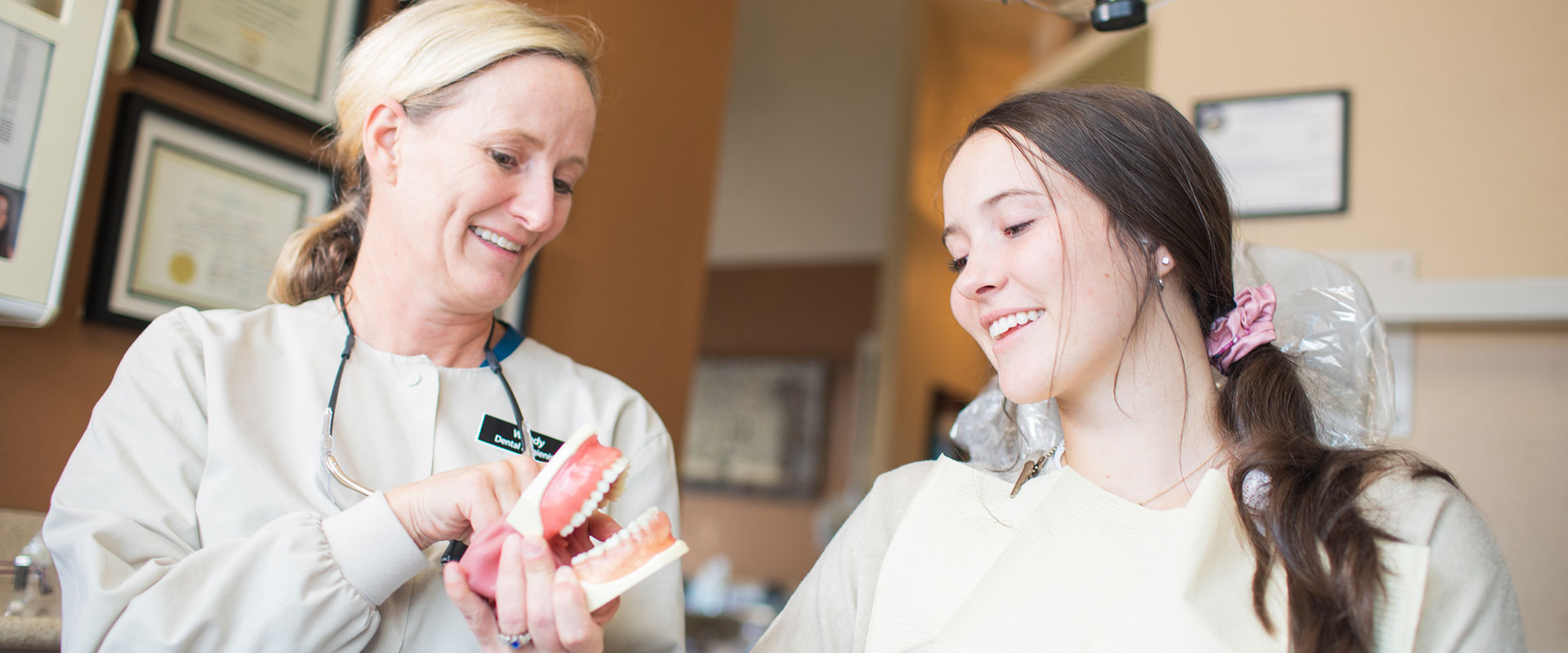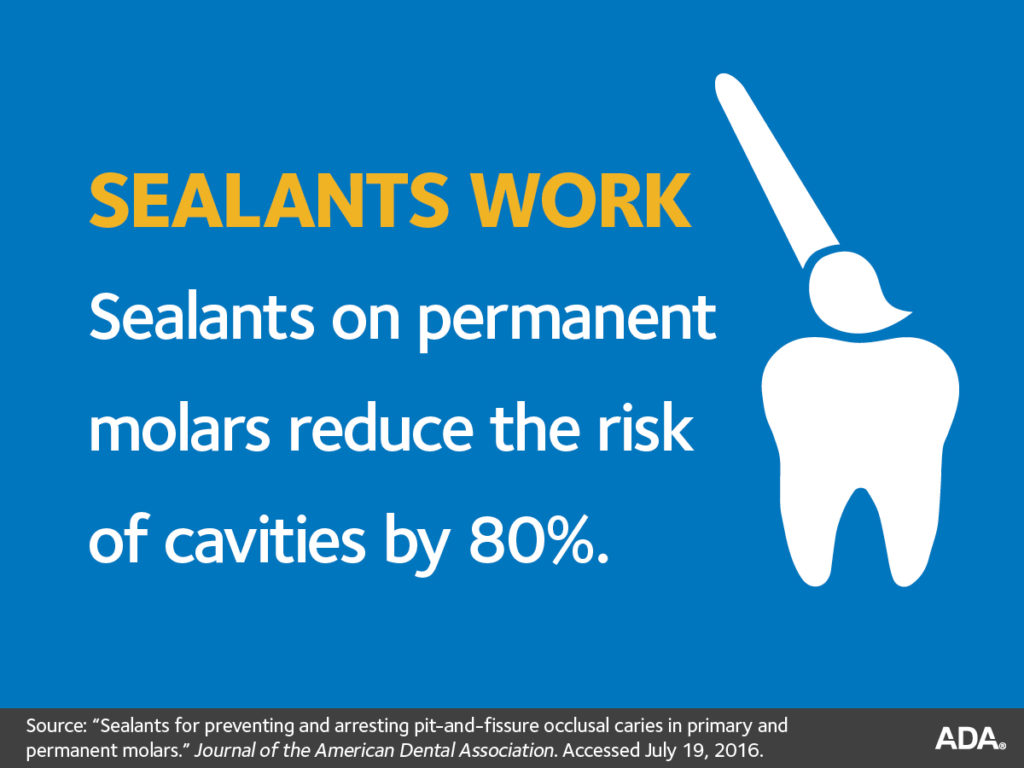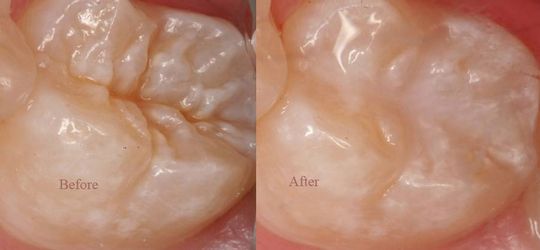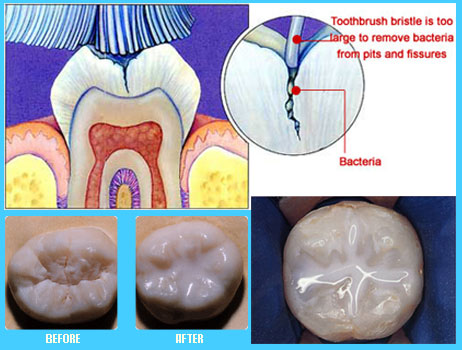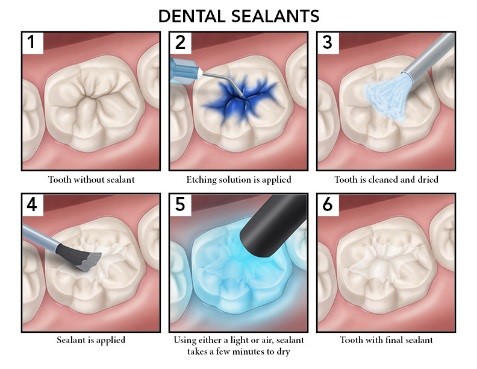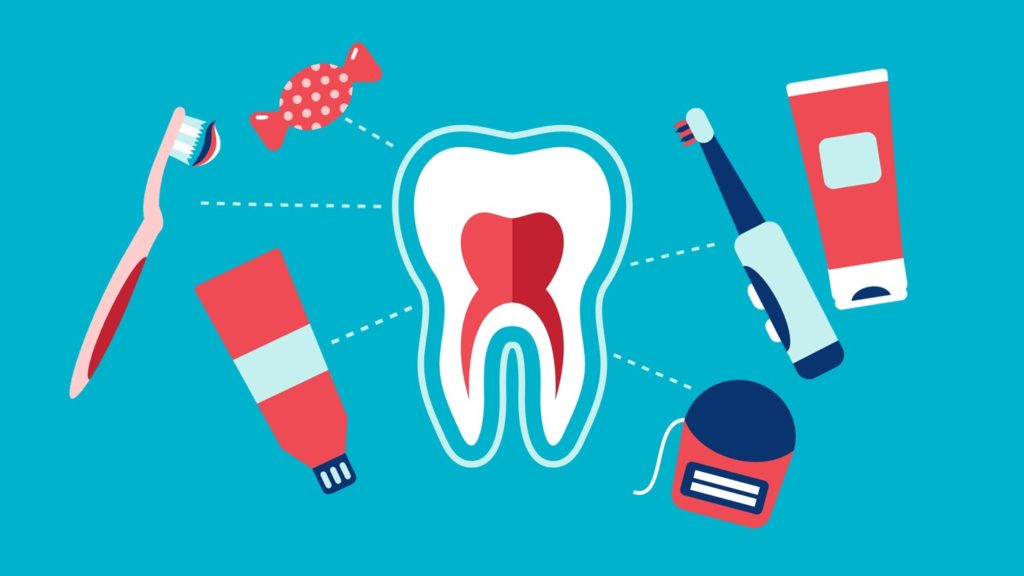Excellent oral hygiene is a very important part of preventing tooth decay. Even the best brushing and flossing routine can't reach all of the tiny nooks and crannies in teeth. First permanent molars start coming in around the age of 6. Those same teeth are supposed to withstand decades of continuous use! Once a tooth erupts into the mouth, it continues to mineralize and harden. On average, a tooth takes around 2 years to reach optimal hardness.
Dental sealants are an easy and effective way to prevent cavities in the grooves and pits of teeth. This is extremely beneficial as teeth complete the mineralization process. According to the American Dental Association, 80-90% of cavities that occur on the occlusal (chewing) surface can be prevented by the placement and maintenance of pit and fissure sealants.
What is a sealant?
Dental sealants are made of a tooth colored, thin resin material that easily flows into the pits and grooves of teeth. Once hardened, the material acts as a shield by blocking out food and bacteria. This creates a more even surface to clean and prevents bacteria from settling into thin crevices that may be too tight for toothbrush bristles to fit in.
Sealants can be placed at any age. Molars are the most commonly sealed teeth because they have the deepest grooves and the highest decay rates. Sealants are most beneficial when placed within the first 6 months after a tooth is fully erupted. Sealants should maintained through childhood and adolescence. Adults with moderate-high decay rates, special needs or medical conditions/situations such as chemotherapy or radiation treatment also benefit from dental sealants.
How are sealants placed?
A tooth must be examined to insure that it is cavity-free. If decay is present, additional treatment is needed. Once the tooth is determined to be cavity-free, it is cleaned to remove plaque and food particles. Next, the tooth is isolated with cotton to keep the area dry. An acidic etchant solution is carefully applied to the tooth. The tooth is rinsed and thoroughly dried before placing the sealant material on the tooth. The sealant material flows into the crevices and special care is taken to insure that all grooves are covered. An LED dental curing light is used to set and harden the sealant material. Once hardened (about 10 seconds of light exposure), the sealant process is complete. The process is painless and typically quick and easy!
Sealant care and maintenance
Eating and drinking can resume immediately after sealant placement. Ice chewing, eating sticky/chewing candy, and clenching/grinding teeth can all cause excessive wear to sealants. Even everyday chewing can cause normal wear and tear that will need attention as years pass. Your dental hygienist and dentist will examine the condition of your sealants at your regular cleaning appointments. Sealants should be "touched-up" as they wear over time.
While sealants greatly decrease decay rates on chewing surfaces, they cannot be placed on the smooth surfaces between teeth. Sealant material relies heavily on mechanical retention to remain in place. The material cannot stay in place without a groove to settle in. Excellent oral hygiene, a healthy diet, and regular dental care must still be practiced to protect teeth from decay.
